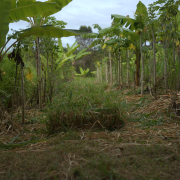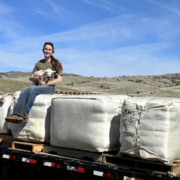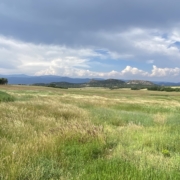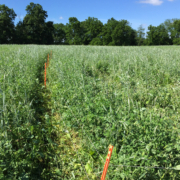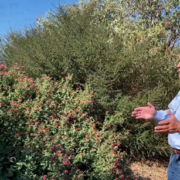Perennial Forages, Shrubs, and Trees, Part 1
 Print This Post
Print This Post
By Justin Morris, NCAT Regenerative Grazing Specialist
It has been estimated that 80 percent of all crops farmed globally are annuals. However, in nature, perennials make up over 90 percent of all plants. Agriculture is overwhelmingly focused on annual plants worldwide. Most of the nation’s staple food crops like corn, soybeans, wheat, oats, barley, rice, beans, potatoes, and sugar beets are annuals. Most of the vegetables found in the grocery store and in people’s gardens are annuals, with the main two exceptions being asparagus and artichokes.
When it comes to forage for livestock, reliance on annual plants changes depending on where you’re located. In the north, most of the forage grown, except for corn silage, is from perennial plants. In the south, a significant portion of the forage grown on a livestock operation might be from annual plants. In situations where annual forages provide the vast majority, or only source, of forage, the questions become: Should we be so reliant on annual forages, or should we incorporate more perennial forages into the operation? What are the disadvantages of being so reliant on annual forages and the potential advantages to including more perennial forages? These questions and more were discussed in an NCAT webinar, Perennial Forages, Shrubs, and Trees. Part 1, held on February 23, 2022.
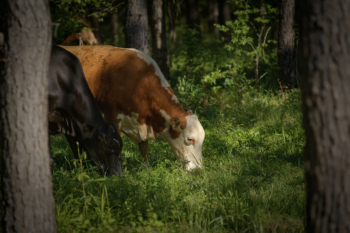
Cattle grazing in a silvopasture. Photo: USDA NRCS Texas
Annual Plants
Annual plants grow very quickly, going from germination to seed production in less than a year. They prioritize seed production and above-ground growth rather than the development of a deep, extensive root system. When perennial vegetation has been removed or severely disturbed through tillage or overgrazing, the first plants to arrive on the scene are usually annuals, kind of like an ambulance arriving to the scene of an accident. Annuals begin the land healing process as they quickly cover the ground because nature doesn’t like bare soil. Annual forage plants include grasses like annual ryegrass, oats, corn, sorghum, sudangrass, and legumes like arrowleaf clover, crimson clover, subterranean clover, berseem clover, and Korean lespedeza.
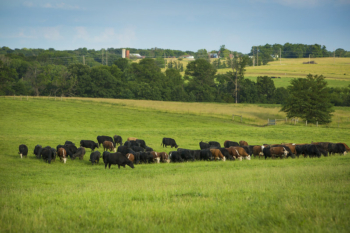
Cattle grazing on South Farm Research Center, Missouri. Photo: Kyle Spradley, University of Missouri
Perennial Plants
Perennial plants grow more slowly than annuals, but they’re in it for the long-haul, kind of like the story of the tortoise (perennials) and the hare (annuals). Under the right grazing management, a perennial plant can live for decades while not needing new seed or equipment to do the re-seeding like with annuals. Perennials prioritize root growth over seed production and above-ground growth. They reproduce primarily through roots, but also develop seeds. After annual plants are well established on a disturbed area, perennials gradually replace annuals as part of the land healing process. Perennial forage plants include grasses like orchardgrass, timothy, tall fescue, big bluestem, bahiagrass, bermudagrass, and legumes like alfalfa, birdsfoot trefoil, and white clover.
Other Plant Classifications
In addition to plants being categorized according to their lifespan, forage plants can be classified as being either cool- or warm-season, grass or broadleaf, bunchgrass or sod-forming grass, native or introduced, herbaceous (non-woody) or woody (shrubs and trees). All these classifications show that there are always plants best adapted for certain environments, depending on climate, soil type, and grazing management approach.
The last half of the webinar discussed the merits of using trees on pasture. Beyond the obvious benefits of providing shade for livestock, trees are an incredible resource to have on pasture.
When planted/thinned to the appropriate density, trees can provide the following:
- Greater resilience of understory plants to extreme temperatures, as trees help reduce temperatures and transpiration rates of forages
- Improved use of under-utilized areas for grazing
- Improved pasture health
- Improved livestock nutrition, comfort, and performance
- Reduced reliance on stored winter forages since many trees drop pods or fruits in the fall and winter that can be very high in energy
- Improved profitability
Watch the webinar here to learn more.
Related Resources:
Silvopasture: A Guide to Managing Grazing Animals, Forage Crops, and Trees in a Temperature Farm Ecosystem, by Steve Gabriel
The Grazier’s Guide to Trees: Taking Grazing to New Heights, by Austin Unruh
This blog produced by the National Center for Appropriate Technology through the ATTRA Sustainable Agriculture program, under a cooperative agreement with USDA Rural Development. ATTRA.NCAT.ORG.


